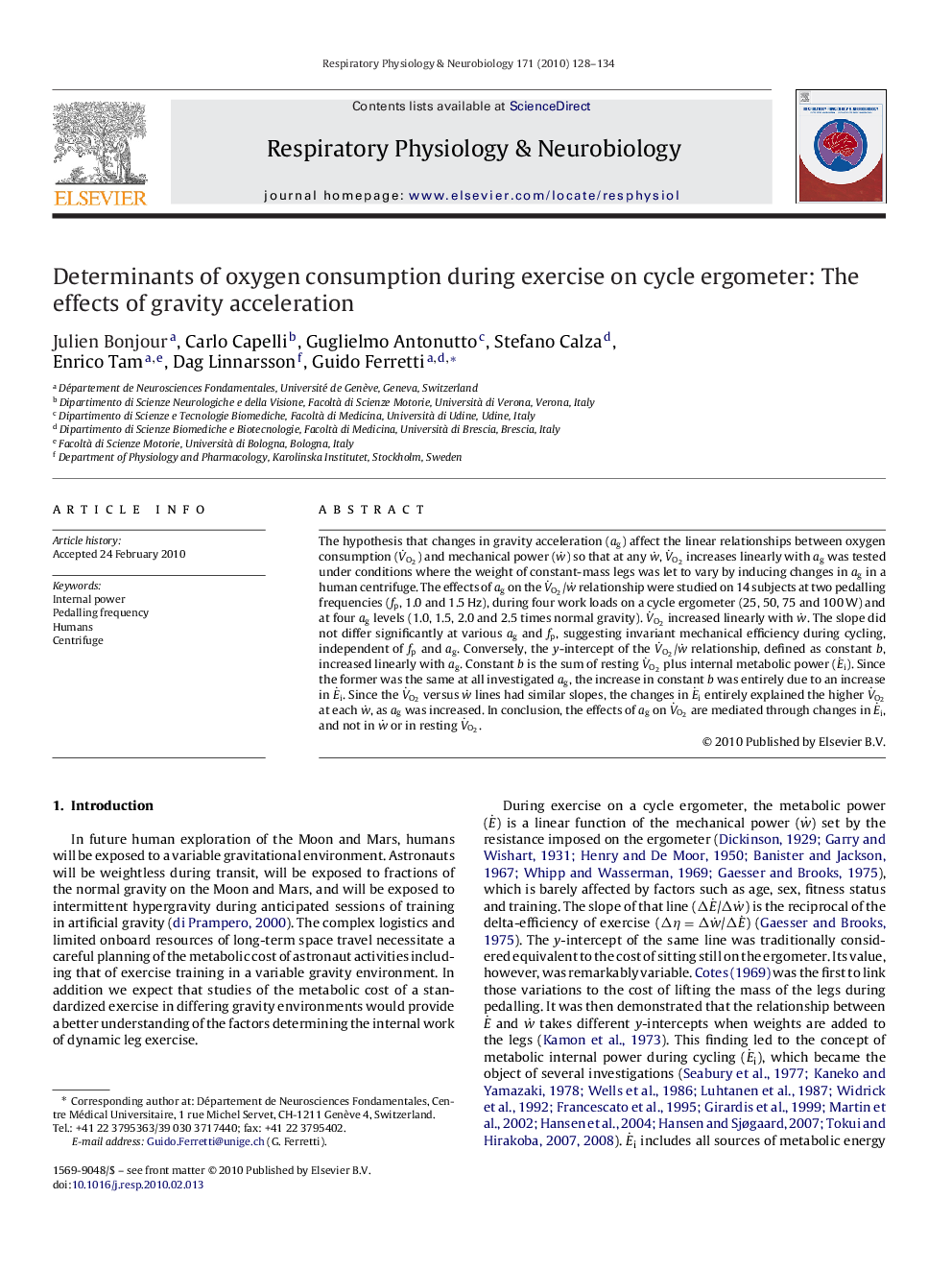| Article ID | Journal | Published Year | Pages | File Type |
|---|---|---|---|---|
| 5926606 | Respiratory Physiology & Neurobiology | 2010 | 7 Pages |
Abstract
The hypothesis that changes in gravity acceleration (ag) affect the linear relationships between oxygen consumption (VËO2) and mechanical power (wË) so that at any wË, VËO2 increases linearly with ag was tested under conditions where the weight of constant-mass legs was let to vary by inducing changes in ag in a human centrifuge. The effects of ag on the VËO2/wË relationship were studied on 14 subjects at two pedalling frequencies (fp, 1.0 and 1.5Â Hz), during four work loads on a cycle ergometer (25, 50, 75 and 100Â W) and at four ag levels (1.0, 1.5, 2.0 and 2.5 times normal gravity). VËO2 increased linearly with wË. The slope did not differ significantly at various ag and fp, suggesting invariant mechanical efficiency during cycling, independent of fp and ag. Conversely, the y-intercept of the VËO2/wË relationship, defined as constant b, increased linearly with ag. Constant b is the sum of resting VËO2 plus internal metabolic power (EËi). Since the former was the same at all investigated ag, the increase in constant b was entirely due to an increase in EËi. Since the VËO2 versus wË lines had similar slopes, the changes in EËi entirely explained the higher VËO2 at each wË, as ag was increased. In conclusion, the effects of ag on VËO2 are mediated through changes in EËi, and not in wË or in resting VËO2.
Keywords
Related Topics
Life Sciences
Biochemistry, Genetics and Molecular Biology
Physiology
Authors
Julien Bonjour, Carlo Capelli, Guglielmo Antonutto, Stefano Calza, Enrico Tam, Dag Linnarsson, Guido Ferretti,
